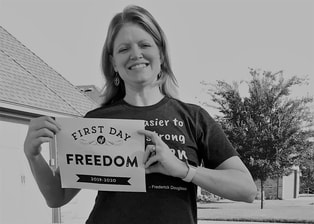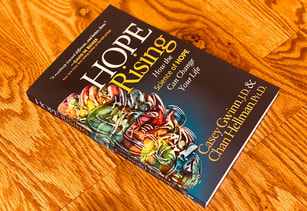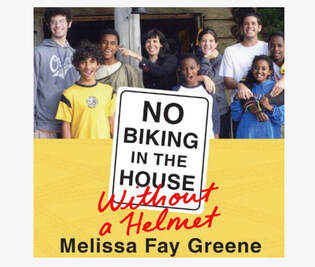|
The State of California has put together a short online training for physicians and other healthcare or mental health workers to learn more about ACEs and implementing ACEs screening in the medical setting. I just did this training myself and I was impressed at how many references they include with the research and how much of the biology and physiology of stress was included. I received 2 hours of CME credit and 2 hours of MOC credit for the American Board of Pediatrics. This is the training that is being required of California physicians before they can bill for Medicaid reimbursement of administering ACEs screens. However, any healthcare provider can create a login and take the course for free. I appreciated the inclusion of the screening tools and an algorithm for how to interpret results and when referrals are recommended. Please take a look if you are a healthcare provider. It will be worth your time!
You can find it at https://www.acesaware.org/
1 Comment
The National Center on Safe Supportive Learning Environments has a few free online learning tools to help teachers and school administrators to learn the basics of trauma informed schools and to collaborate with their local colleagues in how to implement trauma sensitive changes in their schools. I took a quick look at them and it looked like the ones labeled Understanding Trauma and Its Impacts and Building Trauma Sensitive Schools would be best for classroom teachers. I just wanted to point out this free national resource as many are looking for tools to help with this.
Here is the LINK. When we talk about counteracting the outcomes of childhood trauma, most of us have heard of resilience. Resilience is something that is determined both by the child, based on aptitudes and personality, and by the environment and relationships. Something you may not have heard of yet is the science of hope. When I think of hope, I personally think of spiritual connotations. But in Hope Rising, How The Science Of Hope Can Change Your Life by Casey Gwinn, J.D. and Chan Hellman, Ph.D., I learned about the relatively new science of hope. Did you know that hope can be measured? At the Hope Research Center at the University of Oklahoma in Tulsa, Dr. Hellman leads a team of researchers who have developed a screening tool to measure hope in both children and adults. The Hope Score is then predictive of outcomes in the short term and long term. And not just the current score is important, but whether or not a person’s score rises over time. Once we understand the science of hope and how to build it in others, we can then use it to develop activities or conversations in our circle of influence to help ourselves and others increase in hope. Rising hope is desirable to all of us but it is especially something needed by those who have been affected by childhood trauma. Hope can counteract feelings like shame and apathy that often accompany childhood trauma. If you are interested in helping yourself or others in pretty much any area of life, Hope Rising will be an interesting and helpful read. There is a lot of information packed into this book, but it is helpfully broken down into very short chapters with anecdotal stories to illustrate the concepts at the beginning of each chapter. Many of these stories relate to the authors, making it read like a memoir at times. For me this brings in the human element and makes the science more captivating. I read a lot of both fiction and nonfiction and I usually read straight through a book. For this book, I found myself wanting to read a chapter or two a day and then think about it before going on. I also want to say that my favorite chapters came at the end, those on spirituality, the workplace, and leaving a legacy of hope. So, I encourage you to finish the book, as the end is worth it. There is something in Hope Rising for everyone, whether you have experienced grief, cancer, abuse, domestic violence, workplace harassment, or spiritual crisis, or you work with those who have, you will find helpful information that can be applied in conversations or activities with others. As someone interested in helping communities and families counteract the generational effects of childhood trauma, this book is one of the staples for understanding how to help. The concepts can be applied in one-on-one relationships, as well as in large organizations. Currently in Oklahoma, the State Department for Human Services is rolling out training for their staff, using Hope Rising, to help staff relate to our citizens in ways that raise hope. Speaking of hope, that is something that raises my hope for future generations in our state! by Laura Shamblin, MD You may not have heard yet about the change in federal law that allows states to use federal matching dollars to pay for child abuse prevention services for biological families rather than solely for foster care services after the child has been removed from the home. This law was included in a large omnibus funding bill and so did not get a lot of notice, but nationally it is a huge change in perspective for how we have been dealing with families and children. There is much evidence that the removal of a child from her parent is a trauma similar to the trauma of abuse or neglect. If we can prevent families from descending into this level of dysfunction by providing mental health, drug abuse services and parenting support, we should be able to prevent this type of childhood trauma on a large scale. If you'd like to hear more about the new law, how it works, and my personal take on why it is needed you can listen HERE.
Laura Shamblin, MD  One of the best uses of TraumaInformedMD.com is to find out information about types of mental health treatments and to find mental health providers. The list of mental health resources was getting a bit long for the Healthcare page, so I decided to create a new page for only mental health resources in Oklahoma. It is listed as OK-Mental Health at the top of the website. If you live in another state there are still ways to search for resources in your state on the Treatments page. If you live in Oklahoma, this is a more comprehensive list and some search options which are great! These resources are helpful for patients, family members, and physicians as we try to find places to refer to that are close to our patients.  I am SO excited to share with you that TraumaInformedMD.com is opening an online store that will carry customized, printed-to-order, items that are specific to childhood adversity, resilience, foster care, and adoption. There will also be some more general items that anyone would love. Please take a look at what we have and share with your friends. These will make great gifts! The proceeds from the store will help me to continue to do the work of sharing this important information for free! Blessings! https://www.traumainformedmd.com/the-shop.html#/  Hello Friends, The Summer has been a busy one for me. I stay at home with 4 children most of the time, so summer means I am in full-time mom mode. I do work some evenings and weekends so I am still active as a Pediatrician. This summer I had the privilege of doing a few foster parent continuing education workshops with the Oklahoma Baptist Homes for Children. I was also surprised and honored to be appointed by our governor to the Board of Directors or the Oklahoma Healthcare Authority. Everyone asks me what the Healthcare Authority does, and I answer that they are basically in charge of all Medicaid money that the state spends through itself and 4 other agencies. The money that our state spends is matched by federal money, which requires us to be sure we are following all of the federal regulations on top of state laws. So far, I've done a lot of reviewing agency rules before we pass them to be sure they are clear and necessary. I enjoy the work and it is a volunteer position. This summer, my husband and I also went through The HALO Project with our 6 year old daughter. This amazing program is based on TBRI principles. It provides 10 weeks of training and support to both parents while the children get to learn new skills in self regulation, and other skills needed by children from hard places, with a buddy working one-on-one. It is a great program because it provides so much help in a short period of time. It is also great because both parents are involved. I know from experience that one parent can have all the knowledge, but it will not work until both parents use it with consistency and support of each other. For more information on this see http://www.haloprojectokc.org/. So I've been a little slow at getting updates out over the summer. Things are starting to pick up, though, with showings of the Resilience Film, which I sometimes get to serve on a discussion panel afterwards, conferences, and another foster parent training coming up. I hope to do a training with my church's children's workers soon and am developing that. I also plan to go back through all new research that has come out in the last few months for updated information I can share. Stay tuned! The first is from The Karyn Purvis Institute of Child Development at TCU which is known for developing TBRI, Trust Based Relational Intervention, as a tool for working with children from hard places. TBRI principles focus on helping the child feel safe and connected to their caregiver so that they can focus on learning. This link is for a list of TBRI resources including videos and printables that you will find helpful in preparing for the school year. LINK
The second resource is Sesame Street in Communities. You definitely want to explore their website under the topics tab for videos, activities, and printables on many subjects like resilience, emotions, families, moving your body, math, literacy, foster care, and more. LINK The third resource is a new online training compiled by a therapist who is trained by Bruce Perry's Child Trauma Academy and has spent the last few years training teachers in how to work with the most difficult students. It's called Trauma Camp. If you are interested in going further than your school district is currently providing in training this is a great resource for you to do on your own or with a small group of teachers. LINK Lastly, don't forget to check out the Schools page of TraumaInformedMD.com for many more resources that you may be looking for. Don't forget to share this resource with your principles and colleagues. LINK Have a Blessed Summer! Laura Shamblin, MD
As they neared each child leaving the nest, they began having an itch to refill the nest again, rather than getting closer to an empty one. At first, they became aware of the plight of the children in Eastern European orphanages, where children were languishing with minimal food and almost no adult attention. This led the to their first adoption of four-year-old Jesse. She describes so well the wave of being pushed along by the tide of paperwork and family expectation, once you start the process of adoption, until you find yourself in another country and suddenly the only adult responsible for another human being who is a stranger to you. The feelings of “What have I done!” and the uncertainty that continues as you wait to see, over years, what the potential of this child will be in a loving environment. She describes a little of the struggle of post-adoption depression, bringing light to this little-known phenomenon that is so hard to talk about when the new parents are supposed to be happy and content with their new family.
As Jesse grows and the next child goes off to college, they become aware of the phenomenon of orphans in Africa flooding humanitarian organizations and becoming available for adoption due to the loss of their parents to HIV/AIDs. They are matched with a precious 5-year-old girl who had been the only child of parents who had died of AIDs. Melissa travels to Ethiopia, and this opens up a new panorama of people and places to the reader. Melissa develops a relationship with a woman who, after losing her own children, became a default mother for hundreds of AIDs orphans. Through these relationships the Green family ends up adopting another three older boys over the years. The stories of bringing home boys who had been shepherds in Africa, watching their families’ animals alone by the age of 5 are amazing. These children have talents and strengths rarely seen in Georgia, and yet the adjustment of adding an older child to a family that already has its own groove has its challenges, including an 18-day stretch of the “silent treatment.” As the children become settled in their new life and identities as American teenagers, the family eventually makes a connection with the biological family members of each child. I love that they are able to keep a connection with their roots and ancestry. They provide support to family members in the third world conditions of Ethiopia. At one point, when Sol from Ethiopia is notified that his birth mother has been found and is coming to see him again, Jesse from Bulgaria cries harder than Sol out of joy for his brother! This is a fun memoir-style book that will have you laughing many times. (I listened to it on audio and my kids kept asking what I was laughing at.) But it also gives some insight into the real hardness of adoption, including post-adoption depression, the difficulty of dealing with the unknowns and unanswered questions, the exhaustion, and the struggle to attach, make children feel safe, set boundaries, and mesh into a family unit. It is a celebration of accepting different cultures and people of different religious backgrounds, as well as a reminder that all children who have become available for adoption will have some amount of trauma. The more we can be prepared, lower our expectations for ourselves and them, have lots of grace, and get connected with the best support in our area, the more likely we are to have a joyful journey to becoming a family. More resources for adoptive and foster families can be found at www.traumainformedmd.com. Laura Shamblin, MD In the last month I have had an article published by two major blog sites for physicians. I was inspired to pass on what I've been learning about secondary post-traumatic stress, which is the physical reaction that our bodies have when we hear stories of the trauma of other people, like our patients. This happens to physicians, nurses, first-responders, pastors, counselors and others. As physicians, we are reluctant to show any weakness or admit any mental health struggles due to our own expectations and the pressures of the healthcare system. Please read my take on this struggle and the steps anyone can take to reduce the burden of their own stress.
See OpMed article HERE See KevinMD article HERE |
Laura Shamblin, MDEditor-in-chief of TraumaInformedMD.com Archives
April 2022
Categories |







 RSS Feed
RSS Feed